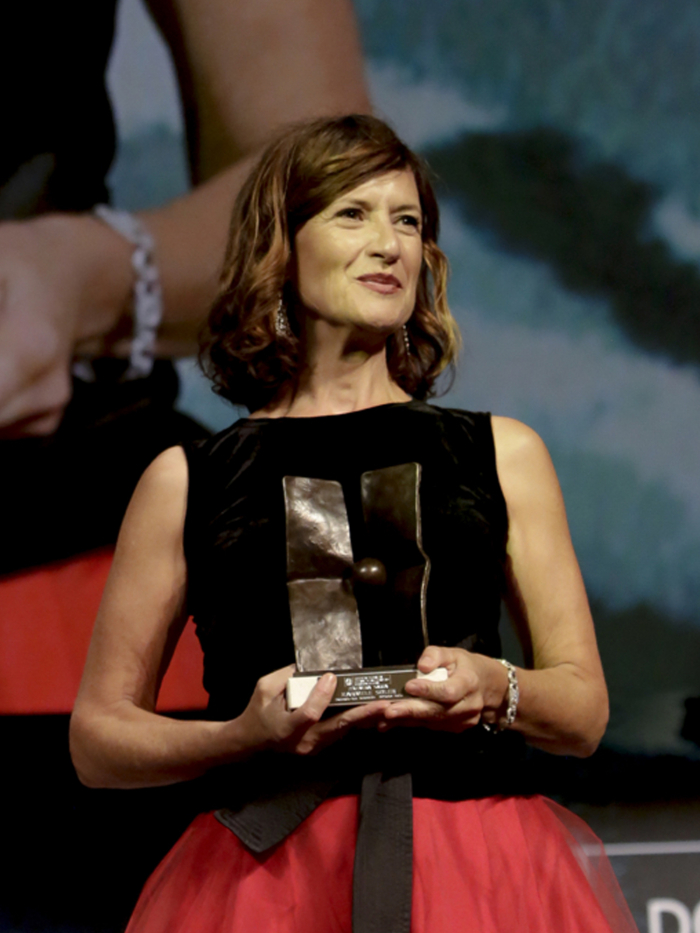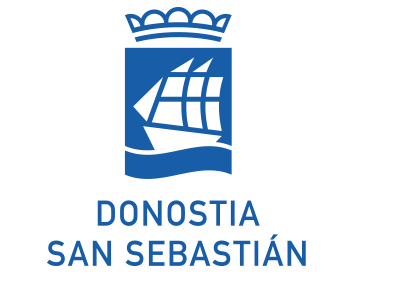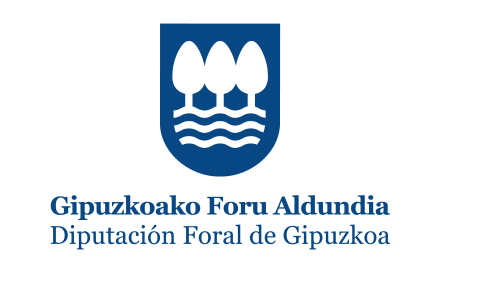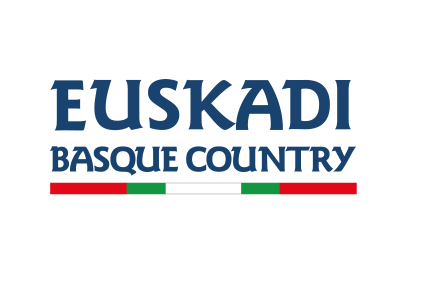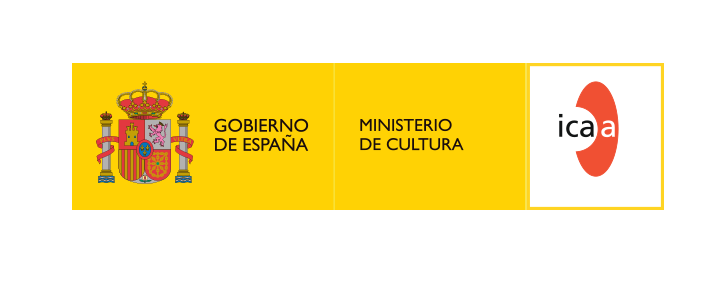YEAR: 2015
ID APARTADO: 53
APARTADO: zinemira_award
SUBAPARTADO:
SECCION:
TABLE: 1
ID: 7202
LANGUAGE: in
MAQUETACION:
TITULO:
RULE: 1
Z365" or "Festival all year round" is the new strategic point of the Festival in which converge investigation, accompaniment and development of new talents (Ikusmira Berriak, Nest); training and cinematic knowledge transfer (Elías Querejeta Zine Eskola, Zinemaldia + Plus, Filmmakers' dialogue); and investigation, disclosure and cinematic thought (Z70 project, Thought and Discussion and Research and publications).
Karmele Soler was born in San Sebastian, daughter of a professional footballer and an aesthetician who passed on her love of makeup. She began at a very young age and had two excellent teachers. In the city of her birth she studied Aesthetics and two years later professional makeup at Estudio 24 in Madrid with makeup artist Juan Pedro Hernández. Thanks to Alfredo Landa, she landed the position of apprentice with the makeup artist Romana González on José Luis Garci’s film, Sesión continua (1984). She later specialised in Film Makeup at the Société Française de Maquillage in Paris. She took her first professional steps at what were at that time the recently opened ETB Miramón studios, where she continues to work today.
Her first movie experience as a makeup artist was on the first films in the Basque language produced by ETB in 1986: Andu Lertxundi’s Hamaseigarrenean aidanez; Alfonso Ungría’s Ehun metro; and Xabier Elorriaga’s Zergatik Panpox. In 1988 came Ander eta Yul, by Ana Díez. And in 1989, Felipe Vega’s El mejor de los tiempos was her first film away from home. She continued to combine Basque cinema with national and international films, providing makeup in co-productions with numerous countries all over the world: Cape Verde, Morocco, Mexico, Colombia, Bolivia, Argentina, Italy, Norway, Nepal, Portugal and France.
She has worked with directors including: Iciar Bollaín on Hola, ¿estás sola? (Hi, Are You Alone?, 1995), También la lluvia (Even the Rain, 2010), Katmandú, un espejo en el cielo (Kathmandu, 2011) and El olivo (2015); Pedro Almodóvar on Hable con ella (Talk to Her, 2002) and La piel que habito (The Skin I Live In, 2011); Julio Medem on Tierra (Earth, 1996) and Los amantes del Círculo Polar (The Lovers of the Arctic Circle, 1998); Juanma Bajo Ulloa on Alas de mariposa (1991), La madre muerta (The Dead Mother, 1993), Airbag (1997), Frágil (2004); Joaquín Oristrell on Novios (1999), Sin vergüenza (No Shame, 2001) and Inconscientes (Unconscious, 2004); Achero Mañas on Noviembre (November, 2003) and Todo lo que tú quieras (Everything You Want, 2010); Daniel Calparsoro on Salto al vacío (Leap into the Void, 1995) and Combustión (Combustion, 2013); Daniel Sánchez Arévalo on Azuloscurocasinegro (Dark Blue Almost Black, 2006) and Primos (2011); Manuel Gutiérrez Aragón on Cosas que dejé en La Habana (Things I Left in Havana, 1997); Imanol Uribe on La carta esférica (The Nautical Chart, 2007); Pablo Malo on Lasa eta Zabala / Lasa y Zabala (2014) and Fernando González Molina on Palmeras en la nieve (Palm Trees in the Snow, 2015). Karmele was also head of the makeup and hair department on another 54 films.
She has received several Goya award nominations, for Noviembre in 2002, Inconscientes in 2003, También la lluvia in 2009 and Andrucha Waddington’s Lope in 2009. In 2012 she finally landed the Goya for La piel que habito. She has also been nominated twice for the Gaudí awards, for Lope and The Frost (2009), by Ferran Audí.
Monday to Thursday: from 9:00 a.m. to 3:30 p.m.
Fridays: from 10:00 a.m. to 2:00 p.m.

